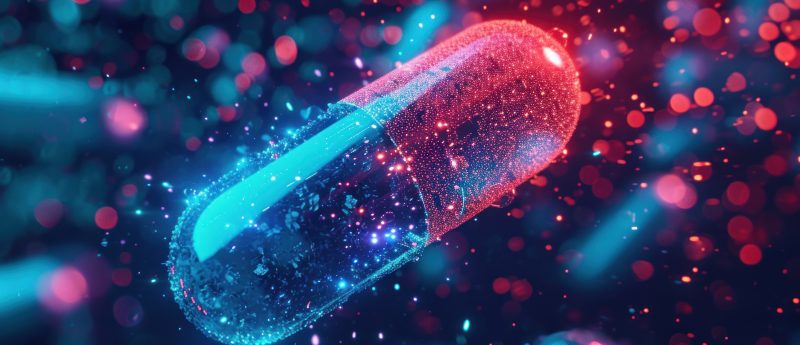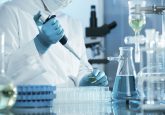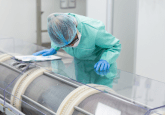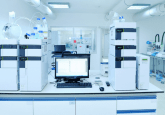Quantitative whole body autoradiography (QWBA) and imaging mass spectrometry (IMS): can IMS replace QWBA to support regulated drug discovery and development

Eric G. Solon
Senior Director of Pharmacology and ADME at Madrigal Pharmaceuticals
Distinguished Fellow of the Society for Whole Body Autoradiography
Treasurer, Imaging Mass Spectrometry SocietyEric Solon, PhD, is currently the Treasurer of the Imaging Mass Spectrometry Society (PA, USA) and the Senior Director of Pharmacology and ADME at Madrigal Pharmaceuticals (PA, USA). Dr Solon now directs and supports various pre-clinical and clinical studies to support the development of Madrigal Pharmaceuticals lead new drug candidate. Before joining Madrigal, Eric was the Senior Director and Fellow of Autoradiography in Pre-Clinical Drug Metabolism and Pharmacokinetics (DMPK) for QPS, LLC (DE, USA). Eric Joined QPS in 2002 as Director and business head of Autoradiography and Animal Resource units. Dr Solon is an internationally recognized expert in the study of drug tissue distribution at the macro/micro level and has published >25 articles and 4 book chapters. Eric earned his PhD at Rutgers University (NJ, USA) and MS at Fairleigh Dickinson University (NJ, USA) while holding various positions in the Pathology Department of the Safety Evaluation Facility for Ciba-Geigy Pharmaceuticals (Novartis, Basel, Switzerland). Dr Solon held various positions in DMPK as well as coordinating ADME studies and all QWBA tissue distribution/ADME studies at DuPont Pharmaceuticals (Hertforshire, UK), and Schering-Plough Corporation (NJ, USA). He has expertise in molecular imaging, managing lab operations, profit center operations, lab animal anatomy, physiology, necropsy and histology, gross pathology, pre-clinical ADME studies, and laboratory and computer validations. He served as President, President-elect, President Ex Officio, Webmaster, Secretary, and Councilor for the Society for Whole-Body Autoradiography (SWBA; DE, USA).
Quantitative whole-body autoradiography (QWBA) [1,2] and imaging mass spectrometry (IMS), including Matrix-Assisted Laser Desorption/Ionization Imaging Mass Spectrometry (MALDI-IMS) [3], Secondary Ion Mass Spectrometric Imaging (SIMS-MSI) [4], Desorption Electrospray Ionization (DESI) [5], and Laser Ablation Inductively Coupled Plasma Mass Spectrometry Imaging (LA-ICP-MSI) [6] are techniques that provide pharmaceutical researchers with the ability to visually and quantitatively examine drug disposition in bodily tissues. These high-resolution ex vivo imaging techniques are being used to characterize drug absorption, distribution, metabolism, excretion, elimination and toxicity (ADMET) of drugs using pre-clinical species’ biological samples to help predict human ADMET properties [7]. A current question in the pharmaceutical industry is whether or not IMS can replace QWBA as the technique of choice when examining the disposition of new drug and biotherapeutic entities.
Want to learn more about emerging technologies? View out Spotlight on Emerging technologies: DMPK and bioanalysis of small molecules
Both QWBA and IMS rely on similar sample preparation techniques before analysis by either approach and every procedure must be thoroughly questioned and validated before regulatory agencies will accept the data in support of new drug/biotherapeutic applications. Autoradiographers who validated QWBA for use in the pharma industry were challenged by bioanalytical chemists who needed to validate their own bioanalytical methods according to FDA guidelines [8]. Autoradiographers had to address questions regarding the effects of: specific activity and radiopurity of the test article; sample size (i.e. varying section thicknesses and areas sampled); matrix effects (tissue quench due to varying tissue densities); limits of detection versus quantitation; euthanasia methods; blood collection/exsanguination; freezing; sectioning; section thickness variability across labs and within sections; section dehydration; use of various quality control and calibration standards (tissue type and ranges); identification and effects of artifacts (e.g., section melting, volatile compounds and metabolites, background); imaging plate detector uniformity; and assuring quality and uniformity across labs before the pharmaceutical industry considered using QWBA data as part of the ADME package [9]. Autoradiographers in the pharmaceutical industry from around the world addressed the validation of QWBA [2,8] and formed two key societies; the European Society for Autoradiography (ESA), and the Society for Whole-Body Autoradiography (SWBA). Together their scientific peer-reviewed articles addressed the issues raised by critics, and after approximately 10 years, the pharmaceutical industry accepted QWBA as the technique of choice, in lieu of less precise ‘cut/count’ organ homogenate/liquid scintillation counting studies that had been used to determine drug organ distribution for preceding decades [10].
QWBA relies on the use of radiolabeled drug molecules for spatial imaging and quantitation of radiolabeled drug-derived radioactivity (converted to parent drug equivalents) throughout all the tissues of lab animals. IMS techniques provide molecular specificity (ability to identify and separate parent drug, drug-related metabolites and endogenous molecules with high spectral resolution) in both pre-clinical and clinical tissue samples by using label-free mass spectrometry technologies. IMS has the ability to provide both a targeted and an untargeted (e.g. –omics) approach; however, limited sensitivity and limited sample sizes for statistical confidence, have hindered the robustness of IMS. Analytical scientists using IMS in the regulated pharmaceutical industry also face the challenge of validating the procedures for the identification and quantitation of drug-related compounds in biological samples to support new drug and/or biotherapeutic applications. IMS users will also need to address questions that are similar to those faced by QWBA practitioners, such as the effects of tissue section thickness uniformity; translocation of soluble drugs/metabolites during processing; the selection and use of different embedding media; tissue section collection tapes; metal or glass sample mounting plates; tissue suppression effects and on-tissue digestion. These variables have the potential to result in the production of varying data across labs and/or studies. In addition to that, MALDI-IMS requires the proper selection and application of the ionizing MALDI matrix and solvent conditions that need to be specifically developed to identify and quantify the various compounds of interest. This can be challenging in tissue sections “due to low molecular weight background signals, poor ionization efficiency and ion suppression of some drugs, and potential isobaric interferences of endogenous molecules”, according to Norris and Caprioli [11]. Efforts to characterize the effects of such variables have begun at some pharmaceutical companies in order to comply with regulatory guidelines established to assure quality of drug/metabolite quantitation using conventional mass spectrometry techniques. Thus, more validation work is needed to answer questions about IMS methods before the pharmaceutical industry will be comfortable using standalone IMS data for regulatory submission of quantitative tissue distribution data obtained in that manner.
Another important consideration is that regulatory agencies currently mandate the use of radiolabeled drugs to identify and profile human drug metabolism, but before radiolabeled test compounds can be administered to humans, investigators must show that the radioactivity from the radiolabeled drug to be administered will not harm the human subjects [12]. Regulatory agencies now recommend the use of QWBA, which requires the use of radiolabeled drugs, and has been rigorously validated by many companies and organizations throughout the pharmaceutical industry, for use in predicting human radiation exposure (dosimetry) [13] during human radiolabeled drug metabolism and mass balance studies. Therefore, before IMS can replace QWBA for determining tissue distribution, IMS scientists will need to demonstrate and validate their ability to efficiently discover, identify, quantitate and profile drug metabolites. To that end, it appears that a combination of QWBA and IMS techniques will be most useful to effectively and efficiently characterize the tissue distribution and pharmacokinetics (PK) of new drugs and biotherapeutics for regulatory acceptance. In addition, IMS allows for the evaluation of the pharmacodynamic (PD) biomarkers within the same samples analyzed for drug metabolites and PK [10]; hence the ability to provide PK/PD data from the same exact samples, with high spatial and spectral resolution.
Similar to the formation of the ESA and SWBA in the 1990s for the promotion of the use of QWBA in the pharmaceutical industry, two new societies that focus on IMS have been formed to advance education, applications and validation of IMS techniques. The Mass Spectrometry Imaging Society, formed in 2012 under the auspices of the European Network COST Action BM1104, and the Imaging Mass Spectrometry Society, a non-profit company formed in 2017, are now working together with the common goals of promoting the development and application of IMS in academia, government and industry.
References
- Solon E. Autoradiography techniques and quantification of drug distribution. Cell Tissue Res. doi:10.1007/s00441-014-2093-4 (2014).
- Coulston F, Carr CJ. Journal of Regulatory Toxicology and Pharmacology, Special Edition 31(2), part 2 of 2 parts (2000).
- Caprioli RM, Farmer TB, Gile J. Molecular imaging of biological samples: localization of peptides and proteins using MALDI-TOF MS. Anal. Chem. 69:4751–4760 (1997).
- McDonnell LA, Heeren RMA, de Lange RPJ, Fletcher IW. Higher sensitivity secondary ion mass spectrometry of biological molecules for high resolution, chemically specific imaging. J. Am. Soc. Mass Spectrom. 17:1195–202 (2006).
- Kertesz V, Van Berkel GJ, Vavrek M, Koeplinger KA, Schneider BB, Covery TR. Comparison of drug distribution images from whole-body thin tissue sections obtained using desorption electrospray ionization tandem mass spectrometry and autoradiography. Anal. Chem. 80(13):5168–77 (2008).
- Rao W, Celiz AD, Scurr DJ, Alexander MR, Barrett DA. Ambient DESI and LESA-MS analysis of proteins adsorbed to a biomaterial surface using in-situ surface tryptic. J. Am. Soc. Mass Spectrom. 24(12):1927–1936 (2013).
- Solon EG, Schweitzer A, Stoeckli M, Prideaux B. Autoradiography, MALDI-MS, and SIMS-MS imaging in pharmaceutical discovery and development. AAPS J. 12(1):11–26 (2010).
- Booth B, Arnold ME, DeSilva B et al. Workshop report: crystal city V—quantitative bioanalytical method validation and implementation: the 2013 revised FDA guidance. AAPS J. 17(2):277–288 (2015).
- Solon EG, Kraus L. Quantitative whole-body autoradiography in the pharmaceutical industry. Survey results on study design, methods and regulatory compliance. J. Pharmacol. Toxicol. Methods 43:73–81 (2002).
- Solon E. Autoradiography: high-resolution molecular imaging in pharmaceutical discovery and development. Expert Opin. Drug Discov. 2(4):503–514 (2007).
- Norris JL, Caprioli RM. Analysis of tissue specimens by Matrix-Assisted Laser Desorption/Ionization imaging mass spectrometry in biological and clinical research. Chem Rev. 113(4):2309–2342 (2013).
- Dain JD, Collins JM, Robinson WT. A regulatory and industrial perspective of the use of carbon-14 and tritium isotopes in human ADME studies. Pharm. Res. 11(6):925–928 (1994).
- United States Food and Drug Administration. 2010. Guidance for Industry and Researchers – The Radioactive Drug Research Committee: Human Research Without An Investigational New Drug Application.






